Review by Noam Bronstein
Many audiophiles glancing at this product will likely assess its low price tag, MM-only gain capability and obscure name brand, and dismiss it with a shrug. That’s a crying shame, and makes “them” at best, likely ADD sufferers, or at worst, a pack of fools. (them, not you! You’re still reading)
I say that, because Robert Morin’s Lounge Audio LCR MkIII is the most honest piece of audio gear I’ve come accross in quite some time. It’s a novel design, it’s beautifully made (in California), it looks great, and, within its parameters, it performs better than almost any phono preamp I’ve encountered south of $1200-1500.
Giving the Lounge LCR MkIII our Gold Star award is a no-brainer. But a little context is needed. And truth be told, I reviewed this unit very much out of context. Allow me to explain.
At Wall of Sound we’re analog enthusiasts. Not snobs, mind you, but we work hard at getting the most out of the black disc. My guess is that a good many Lounge LCR users will be spinning their vinyl on a modest setup. Maybe a lower end Rega or Pro-ject ‘table, fitted with a decent, if not spectacular, high-output cartridge – something like an Ortofon 2M Red, or say a Red from Grado Labs’ budget Prestige series. Now that’s fine, and I think the Lounge will take you far in such a setup, but I had nothing like it on hand for my testing.
All I had during the review period was my Charisma Audio MC-1 (US $1000), and various new and used ‘tables in the range of $1700, $2600, and $3000+. (I’ll give you a moment now, to stop laughing)
The two obvious issues here? For one, many would argue that a $300 phono preamp has no business playing the central role in a $5-10k system (does it?). Secondly, this thing wasn’t designed for low-output carts. Meaning we are dealing with a step-up transformer in front of the LCR. Oh yeah, I forgot to add the cost of the wonderful Altec 4722 vintage transformers. Another $500, cha-ching. Oh, and that means another interconnect, too. This is starting to get silly.
Truth be told, in 2015 these aren’t really “high-end” dollar figures I’m throwing around. Though for me, they begin to make serious inroads on the point of diminishing returns. So I didn’t really give it a second thought…as I said, we aren’t snobs here. Anyhow, I hope that the context is clear now. The MC-1 and Altec trannies served as constants, for a good control factor. And what I did have in house was several other dedicated phono stages to compare the LCR with: my terrific Musical Paradise MP-P1 ($599 + shipping), the wonderful Audio Exklusiv P0.2 (C$1300), and NVO’s new SPA One SE ($5995).
The really amazing part? This little $300 preamp largely held its own against the pricier counterparts. Read on, if you dare…
Physically, the Lounge LCR is a nicely built, small black box. No frills or superfluous features here – not even a power switch. Plug it in and leave it powered up. Its one remarkable physical attribute is the acrylic sheet sandwiched cleverly under the chassis’ top plate. The acrylic has frosted edges and is lit up by three blue LED’s, which are glued directly to the middle of the acrylic board with a blob of silicone. The small Class 2 wall wart transformer converts your AC supply to 18VAC @500mA: in other words, when you order the preamp, it can be shipped with the correct transformer for your country’s voltage. Inside the Lounge’s casework, all the circuitry is universal (well, if we consider RIAA correction as being universal).
Technically, the Lounge is based on “RLC Network” filtering theory, in layman’s terms a Resistor/Inductor/Capacitor network. It utilizes portions of Tango’s EQ600 LCR passive RIAA circuit, which has been lauded by analog gurus like Jean Hiraga as far back as 1986, and over the years copied by the likes of Stevens & Billington, among numerous others. Signal paths are short, and the grounding scheme is elaborate and well-designed, with separate ground paths for the audio circuit and power supply. High-speed LT1358 op-amps, rated for video bandwidth, are used in Class A mode, biased via constant current sources (TIP31C/32C chips are used in each channel). Capacitors and inductors are all tested and matched manually by Mr.Morin. Published specs for the MkIII are outstanding: second- and fourth-order harmonic distortions amount to 0.15% THD, measured at 1KHz , at 0.774vrms which 1/10 of full output. First and third-order harmonic distortions are below measurable limits. This preamp uses dual mono topology, with separate voltage regulators, and provides 40dB of gain. One note – the phono jacks, while nicely finished (gold-plated) and well-spaced, are not the oversized units some audiophile types may expect. I would personally avoid using those overly huge, heavy RCA connectors. Just use something appropriate to ensure a copacetic mating.
So you say, did the MkIII really hold its own in the company of the big boys? For the most part, yes it did(!!). For sure, it didn’t image as exquisitely as the Po.2, or paint instrumental textures like the 13-tube NVO. But at no time did I feel that the Lounge was embarassed, or grossly outclassed. Astounding. Yes. Now, there wasn’t any official “shootout” between all these phonos, but off the cuff I switched them and made comparison notes quite a few times. And each time, I found the LCR’s sheer competence to be truly remarkable. While the Lounge didn’t have all the holographic sparkle of my NOS tubed MP-P1, nor all its tonal delicacy with acoustic instruments, it was pretty darn close. In other areas where solid-state should excel over tubes, like noise floor and bass slam, the LCR did clearly best my MP-P1 – which is saying a lot. It handled Mahler’s 4th symphony with aplomb and insight, and I especially enjoyed the propulsive bass lines. Same deal with Springsteen’s The Ghost Of Tom Joad. Works like Handel’s Water Music (Decca SXL2302 Analogue Productions reissue) literally jumped from my speakers; same with a Mercury Golden Imports Dutch pressing of Respighi’s The Birds and Brazilian Impressions. Doing real justice to most symphonic music means having low noise and exceptional resolution – if the microdynamics in the softer passages are lost, the experience will always be less than fully satisfying. The LCR MkIII performed so well in this regard – and it had the reserves to play loud and with authority, and to make those swings instantaneously when called upon to do so. Very high praise, indeed.
Overall, the Lounge preamp happily revealed what was in front of it, and was always musical; it never sounded artificial or fatiguing, the way so many low-budget components can and often do.
I would rate this phono preamp above all the direct competitors that I’m familiar with (Cambridge, Graham Slee, Bellari, Jasmine, to name a few). Mated to a good MC cartridge and SUT, it makes music come alive, with drive and verve, in a way that’s really unheard of at this price level. Again, please bear in mind the context in which I’ve employed the Lounge. You could start off using it in a very basic system, even with a vintage Dual or Pioneer belt-drive, and build your way up around this unit. It’s that good.
**I expect to receive a nice MM for review shortly, the Nagaoka MP-500. I will update this review with an addendum on the Lounge’s performance, minus the Altec trannies and the extra interconnect. I expect it will sound excellent.
In the end, I asked Lounge Audio if I could buy the review unit….sending it back to California just seemed ridiculous. While I am partial to tube preamps, and won’t be parting with my MP-P1 at this time, I now have two great, affordable reference phono preamps. I couldn’t be happier. And I’m most happy to recommend the Lounge LCR MkIII to anyone with a high-output solution – be it cartridge or SUT. And to award it our Gold Star, for superb, exceptional performance and value.
Lounge Audio LCR MkIII Phono Preamplifier $300 USD
Supplier: Lounge Audio direct purchase
Web: www.loungeaudio.com


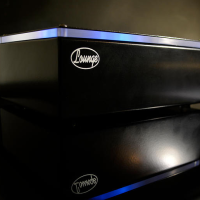
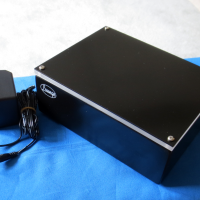
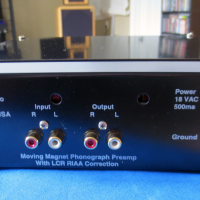
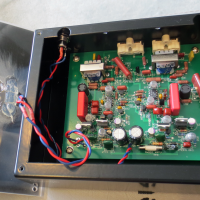
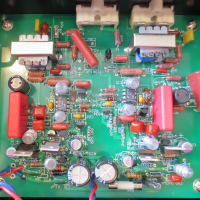
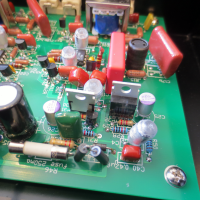
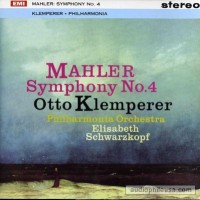
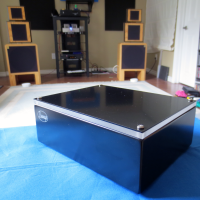

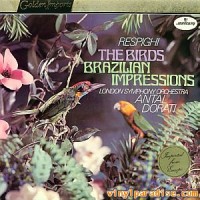

LCR RIAA is not Hiraga
it is US Patent
I didn’t say it was designed by Hiraga.
I ordered this last night. Most everything I’ve read is positive except a few that say it is flat sounding and easily beaten with other products in the same price range. Is your review still true today?
It’s my first pre-amp truthfully and I’ll be pairing it with a denon 300f with shure m97xe cart. There are always so many option and I always feel I could have chosen better, i want to feel good about my choice and I think i will.
Hi Daniel,
Reviews are subjective and making recommendations remotely is very dicey, but I THINK you’ll like the Lounge. 🙂
Let us know what you think.
Noam
Tried a Shure M97XE with the Lounge and it was great, but after installing an Ortofon 2M Blue on my Technics SL-Q2 paired with the Lounge Audio LCR MkIII it really shine. Highly recommended for the price !
Thanks for the review. This really got me motivated and I made the purchase over a year ago. First off, the customer service is flat out excellent. Second, I’ve upgraded to an all-Denon chain with SUT and this got me comparing the Lounge to others above its price. By comparison, the Lounge gets a much more holographic “in the room” sound than competition at twice the price. If you’re uncertain, they charge a 10% restocking fee. You can’t go wrong with this. Add it to your shootout!!!
Any thoughts on how this compares to the Vincent PHO-8?
Sorry, no.
I just received the Lounge Audio LCR MkIII and plugged it in expecting to be amazed with the sound I would be hearing, certainly compared to my Project S phono stage. Unfortunately this was not the case, it sounds extremely flat. For everyone wondering, my system is not ridiculous, its fair basically. I have a Pro-Ject Carbon with an Ortofon 2M Red, a NAD 757t receiver, a set of Elac Uni-fi bookshelf’s and an Elac sub woofer. I know there is typically break-in time but I’m worried this will not change the sound as drastically as it needs. Is this normal, or is this phono stage perhaps not a good match for my system.
Jay,
That’s unusual. Flat is about the last word I’d use to describe the LCR’s sound.
This is replacing a Tube Box S? Lounge says give it 8 hrs burn in time. You might want to call them.
(it stays plugged in all the time anyway)
Let us know what happens.
Any opinions on phono cabling from a Well Tempered classic table to the lounge then to a Jolida 502b amp ? I’m considering Audio Sensibility or Morrow or DH Silver Sonic cables….
I found the Audio Sensibility very good as a phono cable. OCC makes a difference.
I bought one of these after reading all the great reviews, including this one. I love it, but it took about four weeks for it to start sounding really great. At first the low and high ends seemed really weak, although the midrange was great right away. I played records with both the bass and treble boosted, which helped a lot. Gradually I backed off on both, and after about four weeks, I’m back to no boost, and the sound is awesome.
Thanks for sharing your experience, Greg.
This site was… how do you say it? Relevant!!
Finally I’ve found something which helped me. Thanks a lot!
Jay, I think your problem is that the Ortofon 2M Red is a very, very mediocre cartridge. I suspect you’re finally hearing it clearly.
I’m considering pairing this with a nagaoka mp-200. What was your experience with the mp-500?
Hi Nicole,
With the MP500 I think it may be a case of “too much cartridge” for the phono stage, i.e. the 500 warrants a more all-out pre with loads of detail. The MP200 is a better choice I think (I use an MP200 as my daily driver, it’s excellent).
Noam
Would you consider this a big step up from the built in pre on a NAD c316bee v2? How about compared to a Rega fono MM mk3? I’m trying to decide between that and the Lounge… matching it up with P3 / Elys2. Hoping to upgrade to an Exact one day..
Hi Troy,
I’ve owned the Fono, have the integrated (I’m a dealer now), and had a P3/Elys2 a couple of years back. The Lounge LCR is a real upgrade, but: your weakest link right now is the cartridge. Something like a Nagaoka or Goldring would be a worthwhile step up. I would even look up to the level of a Hana if you can afford to. Let us know if you need any other advice or help.
Thanks for reading WoS,
Noam
I own a Louge audio MARk III with silver, better than the Lehmann SEII,witch is too lean.